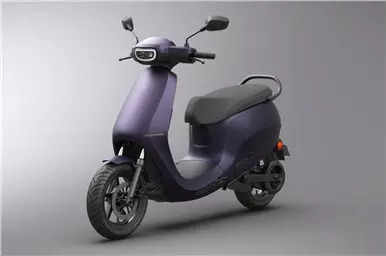
Ola Electric says it has fixed all the issues with its after-sales service and the turnaround time for servicing vehicles has been reduced to less than half. In October last year, when the company was inundated with over tens of thousands of vehicle breakdown complaints, which ultimately led to a probe by the Central Consumer Protection Authority (CCPA), the turnaround time for servicing vehicles was two-and-a-half to three days, said Chairman and
MD Bhavish Aggarwal. “This is now down to 1.1 days and the trend continues downwards. Our service experience now is pretty much best-in-class the EV industry,” he said after Ola declared wider losses in the December quarter of FY25. Terming service as Ola’s “big focus”, Aggarwal said “we have used a lot of technology, we have scaled up people numbers”. Aggarwal had asserted after the September quarter results too that over 99% of servicing complaints had been addressed, but the CCPA thereafter widened its probe. After its October query, the CCPA has sent two more notices to the company – the last one was in January this year. Meanwhile, Ola’s net loss for the October-December period was INR 564 crore, 50% more that INR 376 crore during the same quarter last year. The loss widened sequentially too, from INR 495 crore in the September quarter of FY25. During the December quarter, revenue declined by almost a fifth or 19.4% year-on-year to INR 1045 crore.Cost of servicing:
Bhavish said the one time, exceptional costs related to warranty and service have been incurred in the December quarter and they will also be incurred in the current quarter. “These are largely linked to the service backlog we had. Not all is linked to warranty though, part of these costs is also a no-questions-asked goodwill we did given that we had a bad issue on service. All of that is now behind us,” he said. The actual warranty cost is INR 3250
per vehicle and as per details shared in an investor presentation, the company incurred an expense of INR 110 crore inservice and warranty costs. In other words, Ola had to shell out INR 1.2 crore daily in the December quarter to cover one-time servicing and warranty costs.Target is to double monthly sales:The magic number OIa is targeting to break even is 50,000 units in sales each month, Aggarwal said. Subject to competitive environment and external factors, Ola is expecting its auto segment EBITDA (earnings before interest, tax, depreciation and amortisation) to breakeven at 50,000 monthly deliveries – it retailed just half this number in January to reclaim the top spot in the electric two wheeler market pecking order.
“When we get there depends on market conditions and EV penetration but we do feel in the next few quarters, we can get to 50,000 monthly sales,” Aggarwal said.
His confidence in doubling sales stems from new products (Ola had just announced entry into electric motorcycles) besides launching the Gen 3 platform; much wider distribution and service reach than in 2024; increasing penetration of electric vehicles in the two wheeler ecosystem and better performance of the new products. Aggarwal called Ola Gen 3 the “future” of two wheeler platforms in India.
The ambitious, 50,000 unit monthly sales target, should be achieved over the new few quarters, Aggarwal said, even as competitive intensity in the electric two wheeler space has only increased month on month. Already, legacy OEMs, TVS Motor Company and Bajaj Auto, have been neck and neck and have managed to trump Ola for many weeks last
quarter in the sales number game. Both these OEMs have already vowed to target market leadership, have launched new products directly in competition with Ola and expanded their distribution networks during the quarter.
Two wheeler EV penetration up
Aggarwal said that the EV penetration in scooters was already about 20% and would grow to 25-30% by the end of calendar 2025. Though there could be some temporary blips, like the reduction in government subsidy to Rs 5,000 from April this year, the growth in electric scooters would stay the course. He also said that in electric motorcycles, the growth would be faster. “We expect a faster penetration than scooters. Scooters took three years to reach 20%, motorcycles will take half or two-thirds the time. Motorcycles are already twice the size of the scooter market”. ends

















